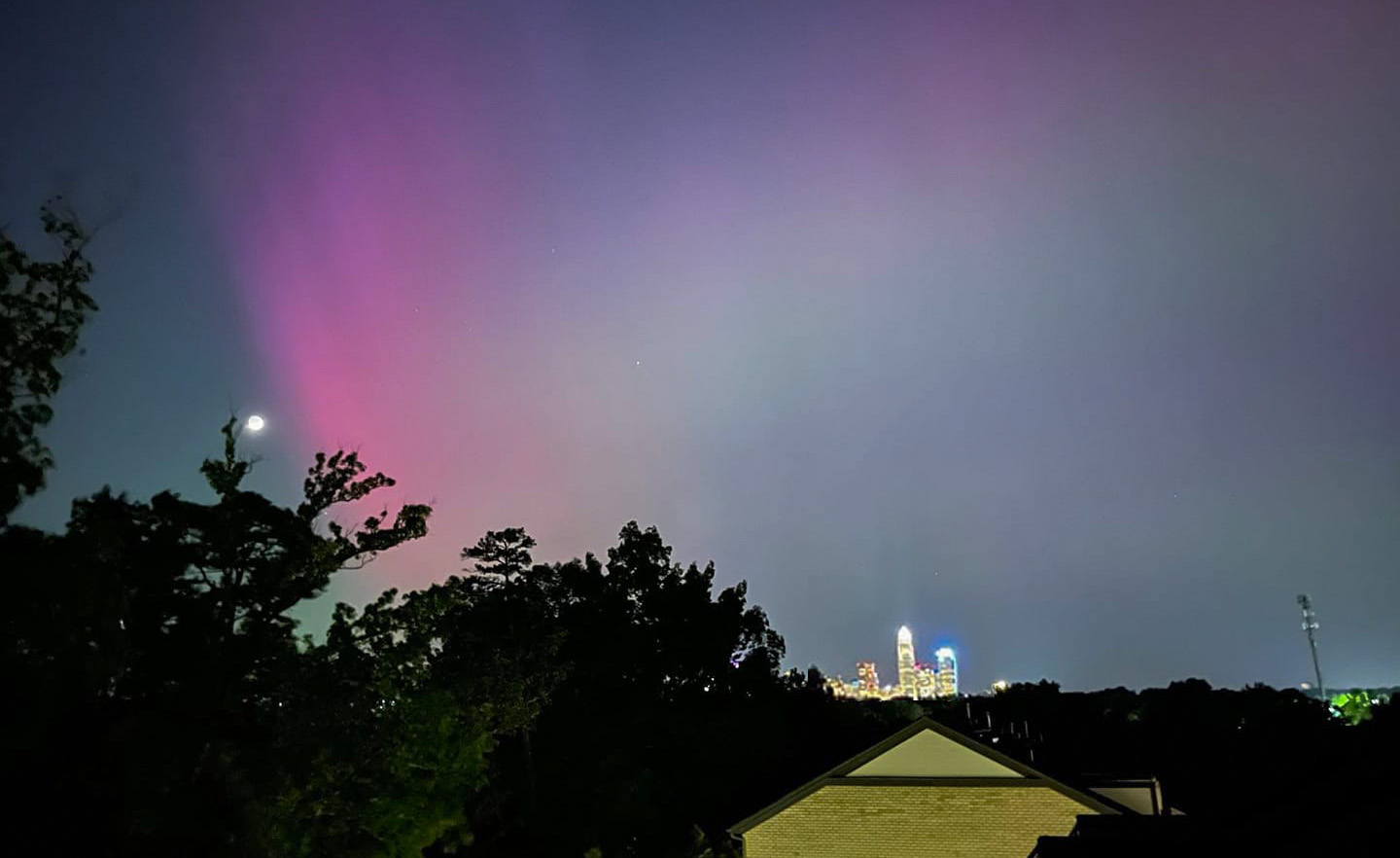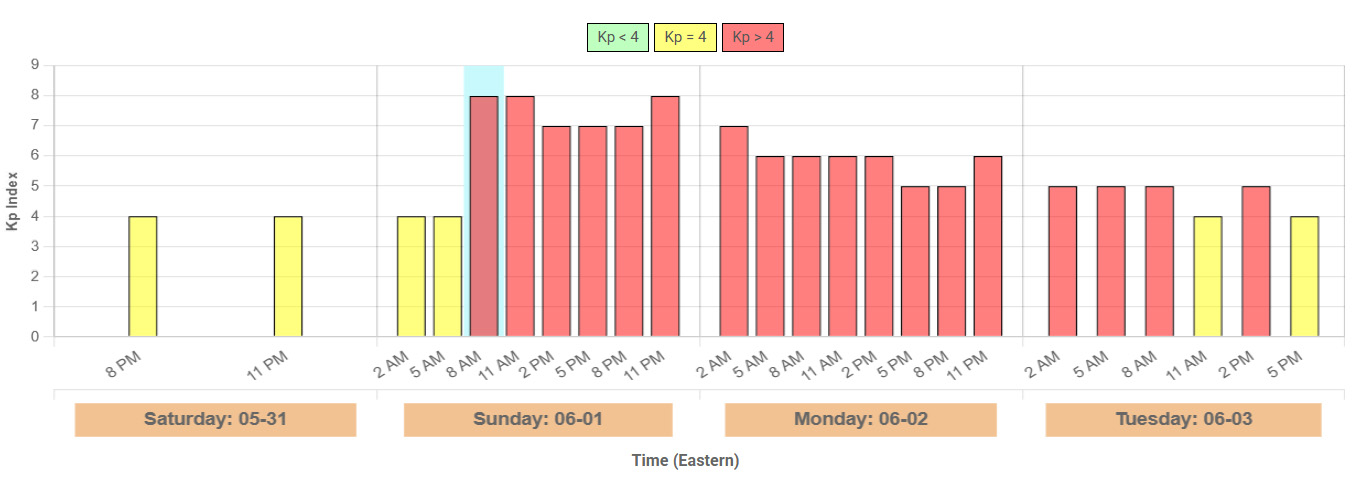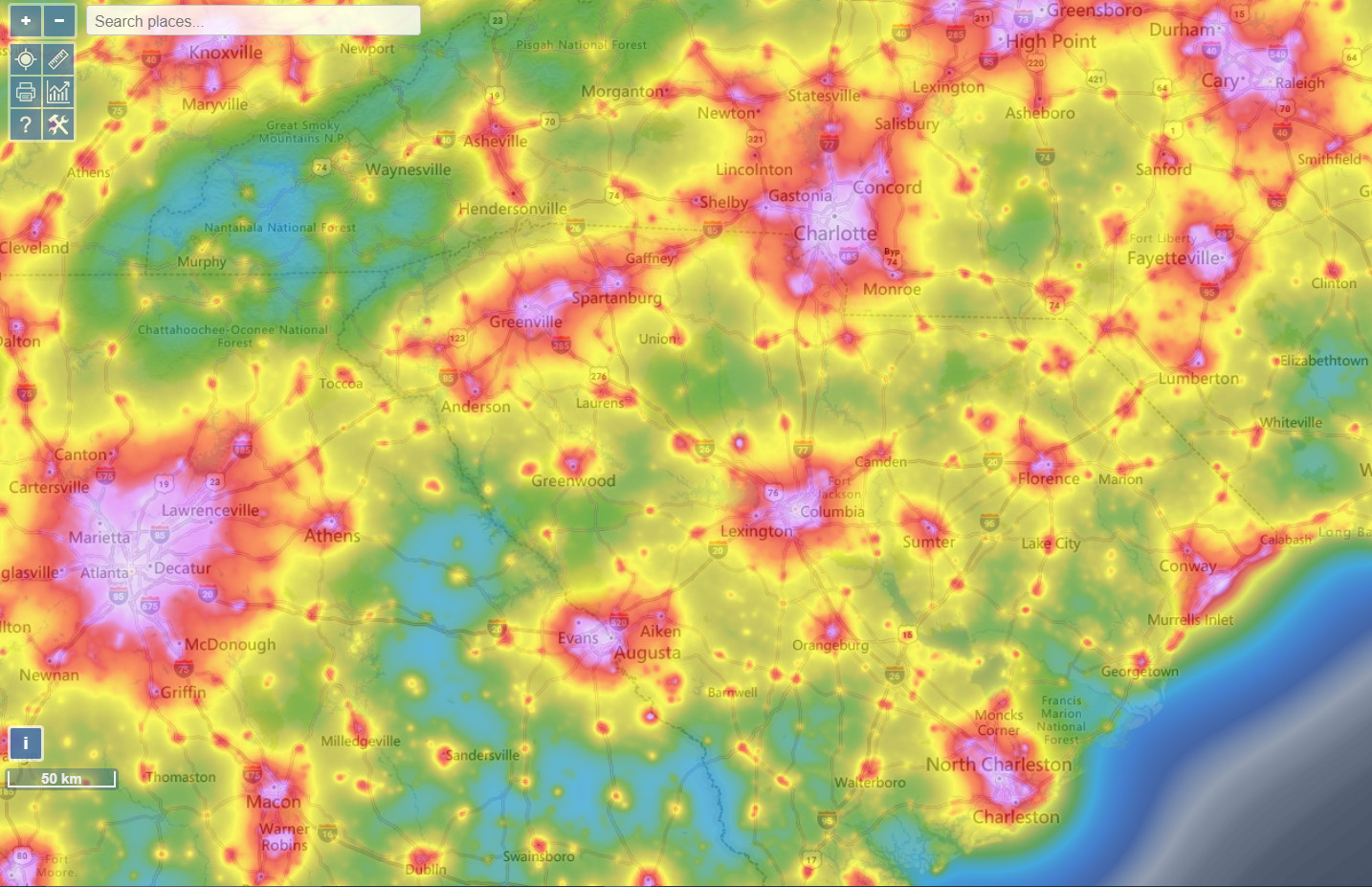
The sun shot out a massive M8.2 flare on Friday night, which is about to cause the most widespread northern lights display since 2024, according to NOAA. Charged particles from the eruption are expected to reach Earth by Sunday night into Monday morning, possibly extending aurora visibility into the Carolinas.
NOAA Space Weather Prediction Center confirmed this morning that the geomagnetic conditions reached G4 this morning.
CME arrived; G3 (Strong) geomagnetic levels observed; G4 (Sever) conditions expected pic.twitter.com/Xnxk4wUW17
— NOAA Space Weather Prediction Center (@NWSSWPC) June 1, 2025
G4 conditions reached. pic.twitter.com/aVZJF081rl
— NOAA Space Weather Prediction Center (@NWSSWPC) June 1, 2025
The KP index is a logarithmic 0–9 scale that measures global geomagnetic activity, with any value above 5 indicating a severe geomagnetic storm.
According to the University of Alaska, the KP index is now peaking at 8.0 and will continue to throughout tonight into tomorrow morning, offering early risers a chance to see the phenomenon.

If you want to get your own shots of the aurora, you’ll need a long-exposure camera. Go to a very dark place where you have an unobstructed view toward the northern sky. The best place would be a remote mountain with north-facing views.
You can find the dark spots in your area using the official light pollution map here.
Happy aurora hunting!



